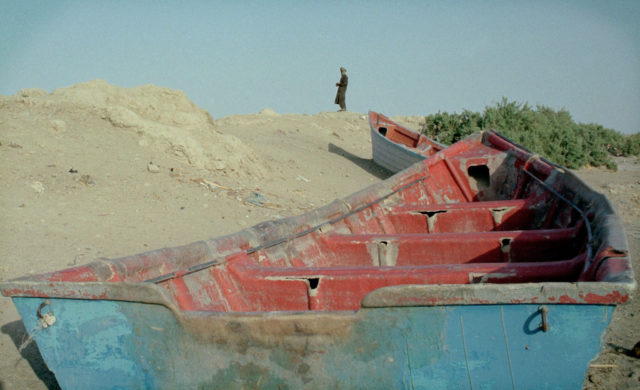By Barbara Slavin
Around the world, glaciers are melting, seas are rising, ground water is being depleted and July was the warmest month recorded since temperatures began being measured in 1880.
Yet, the moderator of Wednesday night’s “Commanders-in-Chief” forum, NBC’s Matt Lauer, did not ask the U.S. presidential candidates any questions about the biggest and perhaps only real existential threat to mankind: climate change.
As Washington swelters into another week of freakishly hot September weather, other parts of the world are experiencing much more serious challenges. Without urgent efforts to reduce carbon emissions and to help poor populations adapt to perhaps irreversible environmental changes, an already refugee-laden world is likely to see an exponential increase in climate refugees and conflicts. This will make the Syria war – which was partly caused by a prolonged drought – seem tame by comparison.
Many of the other countries most vulnerable to these crises are also in the Middle East and South Asia, among them Iran and Afghanistan. At an event at the Atlantic Council on Wednesday, which this analyst chaired, the audience saw a moving new documentary by an Iranian filmmaker, Mohammad Ehsani, called “Once Hamoun,” about the devastation wrought by climate change and poor water management on an area of wetlands along the Iran-Afghan border.

FILE – A fisherman looks out at the dried up Hamoun lake which used to serve as a water supply for agriculture outside Zabol in south eastern Iran, July 17, 2001. Iran’s Sistan-Baluchistan province suffered from a third consecutive year of drought which the United Nations says has
cost the country $2.6 billion this year, up from $1.7 billion in 2000. (Reuters)
The source of livelihood for local people for thousands of years and referenced in the Bible and ancient Persian literature, the Hamouns have largely dried up as temperatures have risen and precious water has been caught behind dams in Afghanistan, wasted through poorly maintained irrigation or diverted into four reservoirs in Iran.
Inhabitants who once made good incomes fishing in the Hamouns and grazing cattle and sheep have been reduced to fashioning straw mats from dried up reeds or feeding barley and dough to livestock. Many others have fled to neighboring cities, abandoning villages that have become a safe haven for drug traffickers and other criminals.
On the Afghan side of the border, people are suffering, too, from a lack of drinking water, said Sher Jan Ahmadzai, an expert on Afghan hydro-politics. He told the Atlantic Council audience that Afghans in the border city of Zaranj must pay for drinking water imported from Iran even though Afghanistan is blessed with five major rivers.
According to Ahmadzai, in the last 30 years, 50 percent of the glaciers that feed those rivers have receded – a phenomenon witnessed around the world. Afghans are also drilling deeper and deeper wells, pushing down the water table and threatening to exacerbate desertification.
Some of Iran’s and Afghanistan’s problems are due to poor water management, especially in Afghanistan which, as Ahmadzai conceded, lacks the technical capacity to deal with these problems and is focused now on defeating a resurgent Taliban. But more could be accomplished with international help that takes into account the entire eco-region.
Fatemeh Aman, a South Asia expert of Iranian origin, argued at the event and in a new paper, that organizations such as the United Nations Development Program (UNDP) and the Global Environment Facility (GEF) can bring “critical scientific expertise to these projects.”
UNDP is already working with Iran but the GEF, a subsidiary of the World Bank, has not made new loans to Iran for several years despite the lifting of nuclear-related sanctions under the recent Joint Comprehensive Plan of Action. U.S. law requires the United States to vote against loans to Iran from multinational organizations because Iran remains on a State Department list of countries supporting terrorism.
While it might be difficult for President Barack Obama to waive this restriction, the Obama administration could quietly signal the other key members of the World Bank that it would not actively oppose a resumption of lending to Iran for environmental purposes.
The United States could also support more academic exchanges with Iran on ways of encouraging green energy, sound water use and other means of mitigating and adapting to climate change. According to Aman, the United Nations has labeled water scarcity the most severe human security challenge in Iran today.
Although Iran’s economy is slowly recovering from sanctions, many ordinary Iranians have not seen much benefit. There is a robust environmental movement in Iran and a resumption of international lending for this purpose would be a potent signal that the nuclear deal can improve Iranians’ current and future standard of living.
Like much of the rest of the world, Iran has gone through a hellacious summer of record heat indexes and sandstorms. Other lakes, in particular, Lake Urmia in the northwest, are also disappearing. David Laylin, an ecologist with long experience in Iran, told the Atlantic Council that a young girl approached Iranian President Hassan Rouhani and told him, “Please revive our lake…or we will fill it with our tears.”
Iran is not alone in facing these challenges. In her 2009 book, “The End of the Long Summer,” environmental journalist Dianne Dumanoski writes that the Earth is approaching the end of an extraordinary period of about 11,700 years of relative climate stability and is facing a future of potentially sudden and extreme shifts in climate caused by humans overwhelming the atmosphere with greenhouse gases.
As Masoumeh Ebtekar, chief of Iran’s Department of the Environment, warned recently, “We do not have much time to preserve water resources and the agriculture and irrigation pattern in certain regions must change….If we fail to guard our planet Earth there will be no future for our children.”

